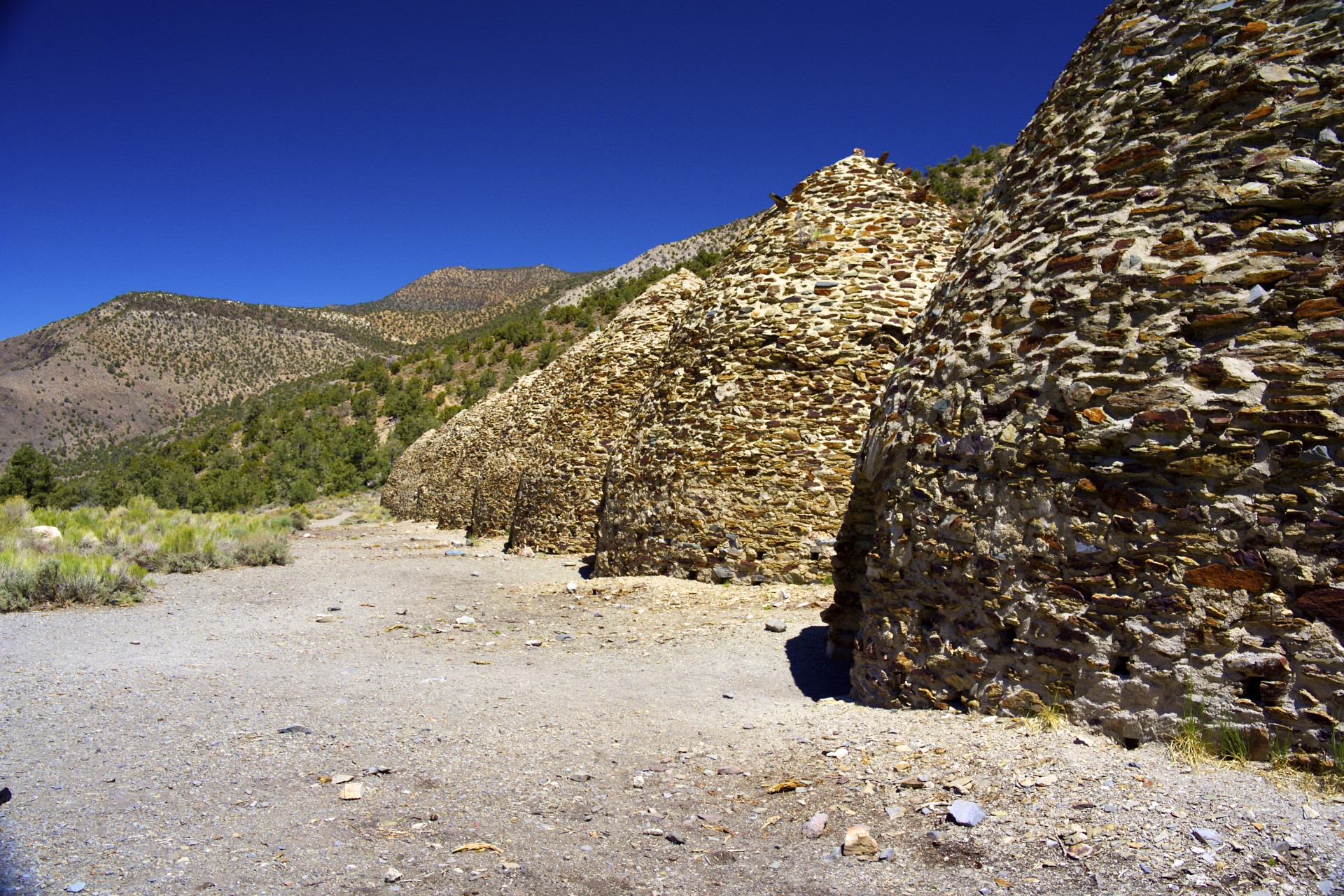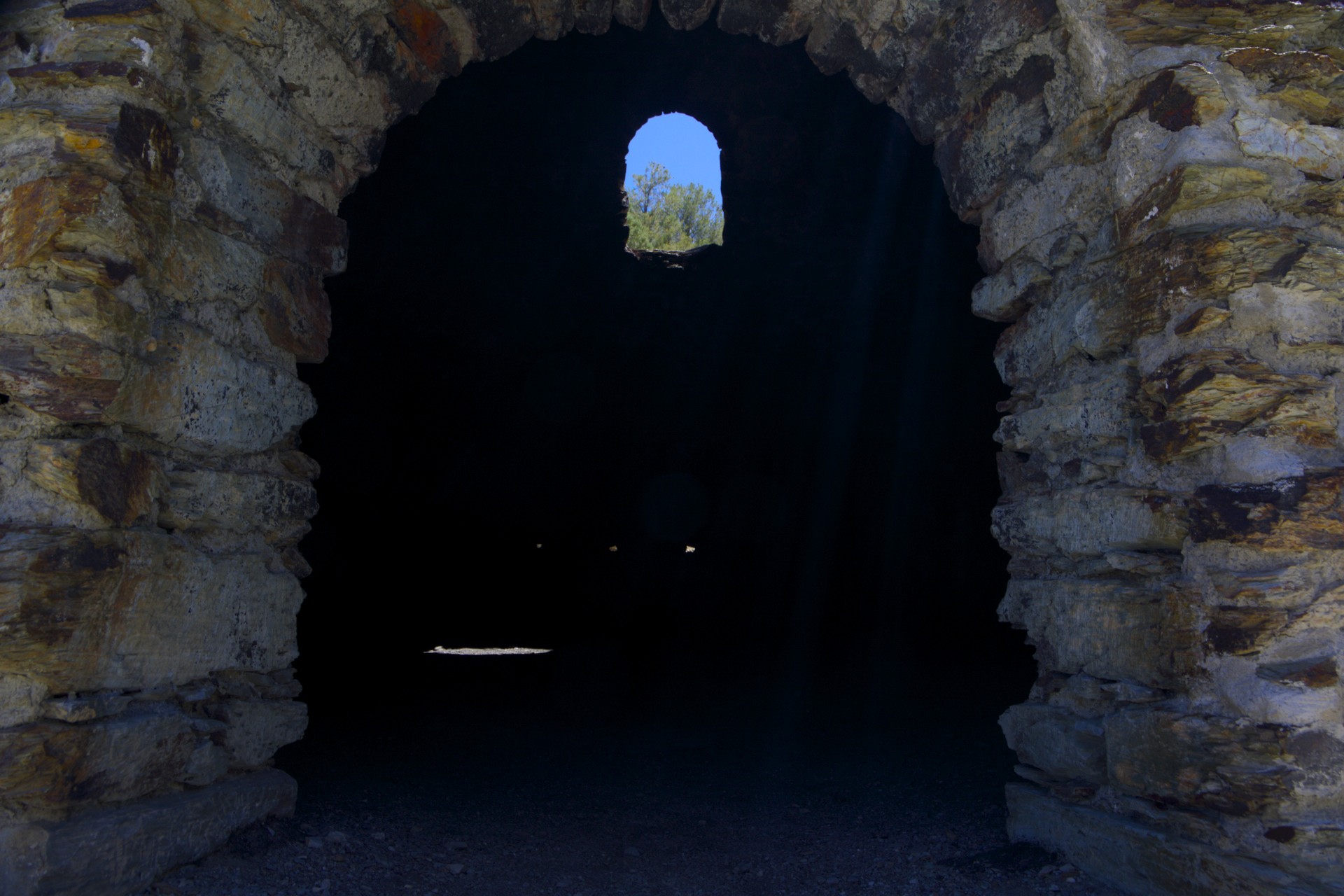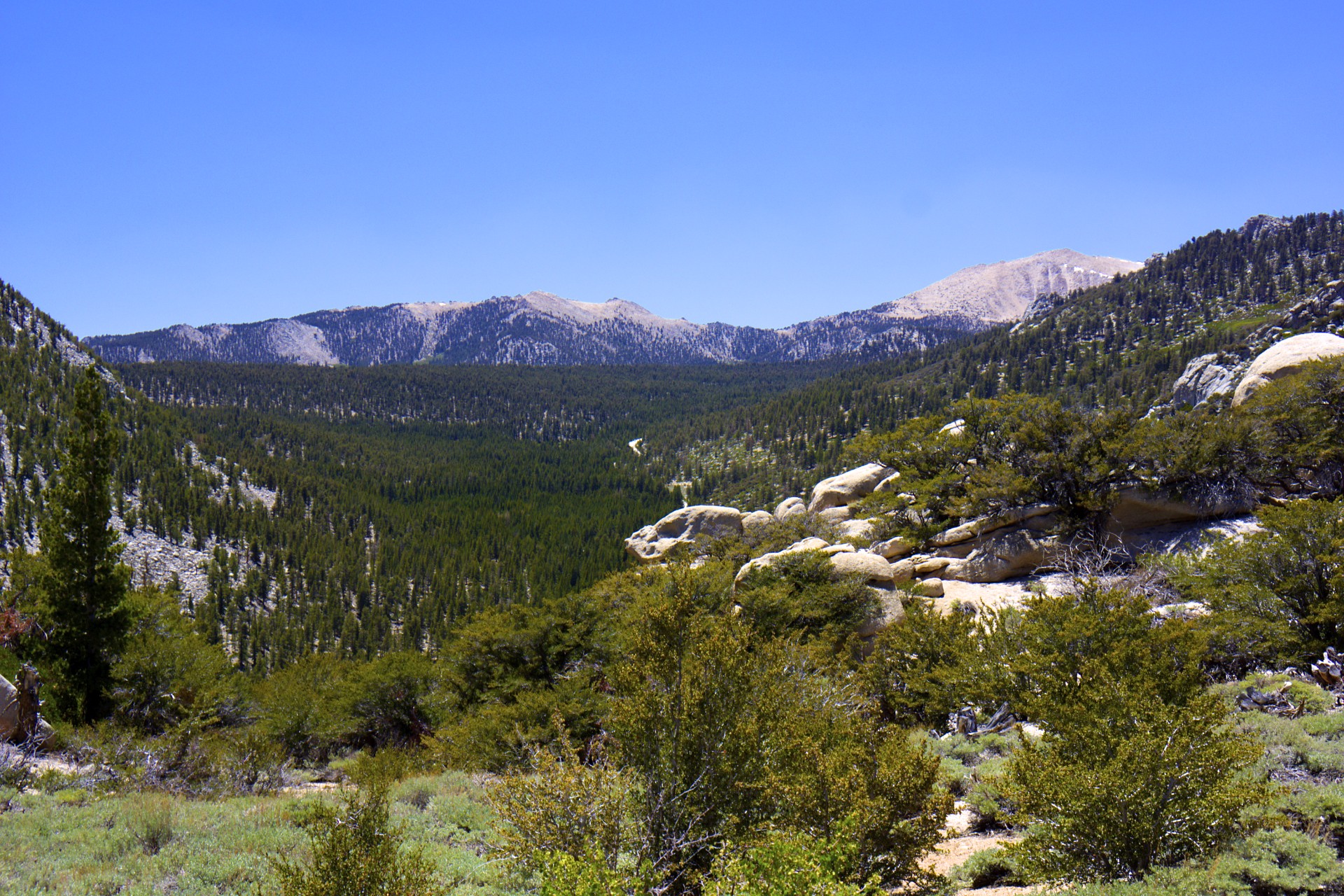Chris Roams
Travel, Adventures, and Photography
High Country
June 10, 2012
Following my night at Mahogany Flat I dropped back down past a long line of enormous charcoal kilns in Wildrose Canyon and into Panamint Valley. The kilns were built here (and in many other places around the area) in the late 1800's to exploit the wood growing at higher elevations to fuel the smelters lower down in the treeless desert so that they could process ore coming out of the mines. After a bite to eat at Panamint Springs, the only scrap of human settlement in Panamint Valley, completely off the grid, reliant on a diesel generator for power and Darwin Falls for water, I passed over the Inyo range and into the town of Lone Pine in the more thickly settled Owens Valley. Owens Valley is the last of the "basin and range" valleys before encountering the high wall of the Sierra Escarpment and lies in its rain shadow just like Panamint Valley, Death Valley, and the rest of the desert to the east. The only thing allowing human settlement here are a series of short rivers, fed by snowmelt pouring down the eastern face of the Sierras, that terminate in dead-end lakes where the water evaporates (or is piped off to Los Angeles) before it can overflow its banks and find a path to the sea.
Heading straight from sea level (or below sea level in the case of Death Valley) up to altitudes above 10,000 feet will usually result in a condition known as Acute Mountain Sickness (AMS): severe headaches, dizziness, nausea, and vomiting. This can progress into High Altitude Cerebral or Pulmonary Edema (HACE and HAPE) where fluid enters the brain cavity or lungs, if not treated this results in death. The only surefire treatment for any and all of these maladies is to descend to lower elevations and the only way to prevent them is to come up slowly, allowing the body time to adjust to the thin air. My night at Mahogany Flat (8,600 feet) was the first step of this adjustment and for the second step I was heading up to spend the night at nearly 10,000 feet in Horseshoe Meadows tucked just inside the edge of the Sierras.
Much like the charcoal kilns up in the Panamint Range at Wildrose, Horseshoe Meadow was also exploited to support mining operations down in the Valley. A sawmill was built up here to support the Cerro Gordo mines across the valley high up in the Inyo range as well as feed the charcoal kilns down on Owens Lake where bullion from the mines was smelted and shipped south to Los Angeles. The supplies for this operation all had to be brought up by mule train until the 1960's when a road was blasted up the escarpment for a proposed ski area. The wilderness act quashed the ski area and with the exception of the road and an walk-in campground at the end of it the entire area is designated wilderness.
Thanks to the dead-end road eliminating the normally grueling climb up the escarpment from the valley floor to the East and without the long approaches usually required from the West this is perhaps the easiest way to access the vast network of trails in the southern Sierra Nevada. In and of itself Horseshoe Meadows is a tiny little easily-accessible slice of what the Sierras are all about: forests of enormous trees punctuated by broad open meadows containing crystal clear streams with a backdrop of bald granite peaks. There is no underbrush here and the trees grow far enough apart that no trails are necessary, once can simply wander for miles and miles with little difficulty. Back up in bear country I tucked my food into one of the heavy steel bear-proof boxes scattered around the campground and set up my tent a few dozen yards from the road, happy that for once I could stay in a public campground without being surrounded by the hum of generators.





Heading straight from sea level (or below sea level in the case of Death Valley) up to altitudes above 10,000 feet will usually result in a condition known as Acute Mountain Sickness (AMS): severe headaches, dizziness, nausea, and vomiting. This can progress into High Altitude Cerebral or Pulmonary Edema (HACE and HAPE) where fluid enters the brain cavity or lungs, if not treated this results in death. The only surefire treatment for any and all of these maladies is to descend to lower elevations and the only way to prevent them is to come up slowly, allowing the body time to adjust to the thin air. My night at Mahogany Flat (8,600 feet) was the first step of this adjustment and for the second step I was heading up to spend the night at nearly 10,000 feet in Horseshoe Meadows tucked just inside the edge of the Sierras.
Much like the charcoal kilns up in the Panamint Range at Wildrose, Horseshoe Meadow was also exploited to support mining operations down in the Valley. A sawmill was built up here to support the Cerro Gordo mines across the valley high up in the Inyo range as well as feed the charcoal kilns down on Owens Lake where bullion from the mines was smelted and shipped south to Los Angeles. The supplies for this operation all had to be brought up by mule train until the 1960's when a road was blasted up the escarpment for a proposed ski area. The wilderness act quashed the ski area and with the exception of the road and an walk-in campground at the end of it the entire area is designated wilderness.
Thanks to the dead-end road eliminating the normally grueling climb up the escarpment from the valley floor to the East and without the long approaches usually required from the West this is perhaps the easiest way to access the vast network of trails in the southern Sierra Nevada. In and of itself Horseshoe Meadows is a tiny little easily-accessible slice of what the Sierras are all about: forests of enormous trees punctuated by broad open meadows containing crystal clear streams with a backdrop of bald granite peaks. There is no underbrush here and the trees grow far enough apart that no trails are necessary, once can simply wander for miles and miles with little difficulty. Back up in bear country I tucked my food into one of the heavy steel bear-proof boxes scattered around the campground and set up my tent a few dozen yards from the road, happy that for once I could stay in a public campground without being surrounded by the hum of generators.





- Acadia National Park
- Adirondacks
- Aerial
- Airstream
- Ancient Bristlecone Pines
- Anza-Borrego
- Appalachian Trail
- Arches National Park
- Backpacking
- Bad Larry
- Bears Ears National Monument
- Boatpacking
- Boston
- Bryce Canyon National Park
- Canoeing
- Canyon de Chelly National Park
- Canyoneering
- Canyonlands National Park
- Capitol Reef National Park
- Caribbean
- Catskills
- Cities
- Climbing
- Colorado National Monument
- Colorado Plateau
- Death Valley National Park
- Europe
- Fisher Towers
- Grand Canyon National Park
- Grand Staircase-Escalante National Monument
- Grand Teton National Park
- Gunks
- Hiking
- Iceland
- Joshua Tree National Park
- Lassen Volcanic National Park
- Manzanar National Historic Site
- Mojave Desert
- Mojave National Preserve
- Mountaineering
- Mt Washington
- Mt Whitney
- Natural Bridges National Monument
- New York CIty
- Pacific Northwest
- Petrified Forest National Park
- Pinnacles National Monument
- Red Roamer
- Road Trips
- Rocky Mountains
- Ruins
- Sailing
- San Diego
- San Francisco
- Sequoia National Park
- Sierra Nevada
- Skiing
- Sonora Desert
- Spelunking
- Superbloom
- Superstition Mountains
- White Mountains
- Yellowstone National Park
- Yosemite National Park
- Zion National Park